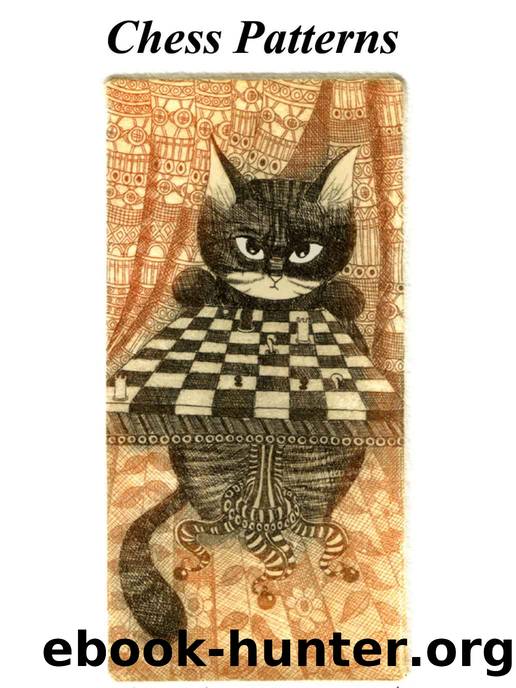FCP: a Handbook of Fundamental Chess Patterns by Rodolfo Pardi

Author:Rodolfo Pardi [Pardi, Rodolfo]
Language: eng
Format: azw3
Tags: Pattern, Chess, Tactic, Cat
Publisher: Gatteria
Published: 2014-04-14T00:00:00+00:00
36 Passed pawn
From a regular pawn majority, a passed pawn should result. In this example of a 3 to 2 majority, the pawn that has no opposition is considered the "candidate" and has the preference. It's the pawn that must advance, the others follow through.
Therefore the correct sequence is: f4, f5, g4, g5, f6.
A big mistake would be first advancing the g pawn: as to g4? g5! follows, and the pawn majority is of no use.
If black pawns are on g6 and h5, then f4, g3 (not h3? where the answer is h4 and paralysis), h3, g4, f5.
If yours is the minority side instead, you must push against the candidate to block him, causing him to become a backward pawn, forcing the advance of a fellow.
This technique is explained by Aron Nimzowitsch, coining the word candidate, but was first considered by Cozio in Il gioco degli scacchi, back in 1766!, no excuse not to know it.
Sample games can be seen here: Create a passed pawn http://scacchi.vecchilibri.eu/partite/candidate.html
Download
This site does not store any files on its server. We only index and link to content provided by other sites. Please contact the content providers to delete copyright contents if any and email us, we'll remove relevant links or contents immediately.
| Coloring Books for Grown-Ups | Humor |
| Movies | Performing Arts |
| Pop Culture | Puzzles & Games |
| Radio | Sheet Music & Scores |
| Television | Trivia & Fun Facts |
The Infinite Retina by Robert Scoble Irena Cronin(6217)
Harry Potter and the Cursed Child: The Journey by Harry Potter Theatrical Productions(4468)
The Sports Rules Book by Human Kinetics(4347)
Molly's Game: From Hollywood's Elite to Wall Street's Billionaire Boys Club, My High-Stakes Adventure in the World of Underground Poker by Molly Bloom(3512)
A Knight of the Seven Kingdoms by George R R Martin(3225)
Quidditch Through the Ages by J.K. Rowling(3084)
How To by Randall Munroe(3075)
Flowers For Algernon by Daniel Keyes(3053)
Quidditch Through the Ages by J K Rowling & Kennilworthy Whisp(2948)
Stacked Decks by The Rotenberg Collection(2844)
Quidditch Through the Ages by Kennilworthy Whisp by J.K. Rowling(2831)
Quidditch through the Ages by J. K. Rowling(2781)
Quidditch Through The Ages by J. K. Rowling(2745)
776 Stupidest Things Ever Said by Ross Petras(2743)
Ready Player One: A Novel by Ernest Cline(2674)
What If?: Serious Scientific Answers to Absurd Hypothetical Questions by Randall Munroe(2670)
Beautiful Oblivion by Jamie McGuire(2585)
The Book of Questions: Revised and Updated by Gregory Stock Ph.d(2544)
Champions of Illusion by Susana Martinez-Conde & Stephen Macknik(2436)
